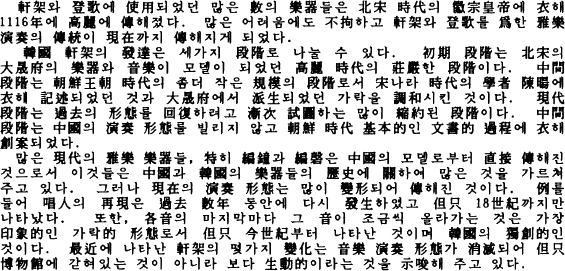Published online by Cambridge University Press: 07 March 2019
Twice a year, in the spring and autumn, a Sacrifice to Confucius called Sôkchôn is carried out in a small shrine compound (Munmyo) in the northeast part of Seoul, Korea. The ritual music, aak, performed during the ceremony is stately and imposing, perfectly suited to its purpose. Many Korean scholars and musicians consider it to be ancient and authentically Chinese, and even a cursory comparison with other musical genres found in Korea shows this ritual music to be strikingly unique in performing style.

Read at the 31st World Conference of ICTM in Hong Kong, July 1991.